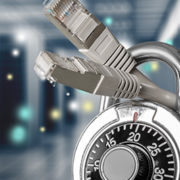How to Establish a Strong Data Loss Prevention Strategy
 In today’s complex digital world, the number of devices, apps, programs, and platforms business communication happens on is steadily climbing. While this leads to an increase in productivity and collaboration, it also leads to a growing number of ways your company’s confidential data can be leaked. Not only do you need to prevent cybercriminals from hacking into your network, you need to stop confidential data from leaving it. Enter data loss prevention (DLP). Essentially, DLP is a strategy put in place to make sure that your employees do not leak sensitive customer and company information.
In today’s complex digital world, the number of devices, apps, programs, and platforms business communication happens on is steadily climbing. While this leads to an increase in productivity and collaboration, it also leads to a growing number of ways your company’s confidential data can be leaked. Not only do you need to prevent cybercriminals from hacking into your network, you need to stop confidential data from leaving it. Enter data loss prevention (DLP). Essentially, DLP is a strategy put in place to make sure that your employees do not leak sensitive customer and company information.
What Is a Data Leak?
One of the most common ways confidential company information finds its way into the wrong hands is being leaked. A data leak is when confidential information is disclosed to an outside source, intentionally or inadvertently, by a member of your organization. Intellectual property, financial reports, patient information, credit card numbers, and sensitive data about the company can all cause trouble for your business if leaked.
The Ponemon Institute found that “62% of business users feel they have access to company data that they probably should not see.” A separate report by Experian revealed that “66% of data protection leaders admit that employees are the weakest link in an enterprise’s security posture.” Numbers don’t lie. No matter what industry you are in, establishing a strong data loss prevention strategy is critical in preventing data leaks.
How To Prevent Data Leaks
A successful DLP strategy uses a combination of software solutions and communication protocols. Here are a few of the best ways to prevent leaks from happening:
 Software
Software
Data loss protection software helps prevent employees from exposing your business data. It’s configured to identify sensitive material that is in use, stored away, and in motion within your company’s network. If the program detects that an employee is attempting to send anything that includes critical information outside of your network, it blocks the transfer from happening.
The software works by using a predetermined set of rules to automatically classify information as sensitive or not sensitive. Key terms and phrases trigger DLP protections, preventing emails, documents, and other communications that contain them from being sent or uploaded to an outside source.
For example, if a staff member tries to forward a business email to their personal address or upload a sensitive report to a cloud storage service that is outside of your network, they will be denied permission.
Educate Employees
 Your employees will ultimately make or break your data loss prevention strategy. Uptime Institute determined that “human error is responsible for approximately 70% of all data center incidents.” Additionally, a recent survey by Haystax found that “60% of companies felt a lack of employee training and expertise were obstacles in managing insider threats.” The reason for such a high percentages is two-fold: lack of ownership and inadequate training.
Your employees will ultimately make or break your data loss prevention strategy. Uptime Institute determined that “human error is responsible for approximately 70% of all data center incidents.” Additionally, a recent survey by Haystax found that “60% of companies felt a lack of employee training and expertise were obstacles in managing insider threats.” The reason for such a high percentages is two-fold: lack of ownership and inadequate training.
It’s critical to educate your employees on their role in protecting sensitive company data and how to correctly do so. How do you ask? Hold training sessions on DLP protocols and emphasize the importance of keeping your company’s data safe. Include examples of how to correctly do this in your workplace, encourage questions and publish a resource library including documents and/or videos detailing the procedures you trained them on. This way, they can refer back to them regularly.
Increase Device Security
Another way sensitive company information can leak is when a device is lost or stolen. To prevent your data being compromised in this situation, you need to adopt a robust standard of security for devices that have access to your company’s network. To do this:
- Employ policies that require all devices, desktop or mobile, to comply with specific criteria before they can gain network access.
- Make sure that all mobile devices have their screen-lock enabled.
- Require two-factor authentication on all logins that allow access to confidential data.
- Encrypt your company’s data. In doing so, sensitive information will be indecipherable without correct login credentials.
- In doing the above, if a device is lost or stolen, it will be extremely hard for an outsider to access the sensitive data on it.
Taking the Next Steps
 Regardless of what industry you are in, protecting your company’s sensitive information is important. That being said, we understand that you’re focused on running your business and may not be able to devote ample time to create a robust data loss prevention strategy. Not to worry. We’re here to help! Our team of experts is skilled in creating rock-solid security strategies that keep your confidential information secure. We’d love the opportunity to develop one customized to meet your organization’s needs. Contact us today, and let us show you how we can help.
Regardless of what industry you are in, protecting your company’s sensitive information is important. That being said, we understand that you’re focused on running your business and may not be able to devote ample time to create a robust data loss prevention strategy. Not to worry. We’re here to help! Our team of experts is skilled in creating rock-solid security strategies that keep your confidential information secure. We’d love the opportunity to develop one customized to meet your organization’s needs. Contact us today, and let us show you how we can help.












